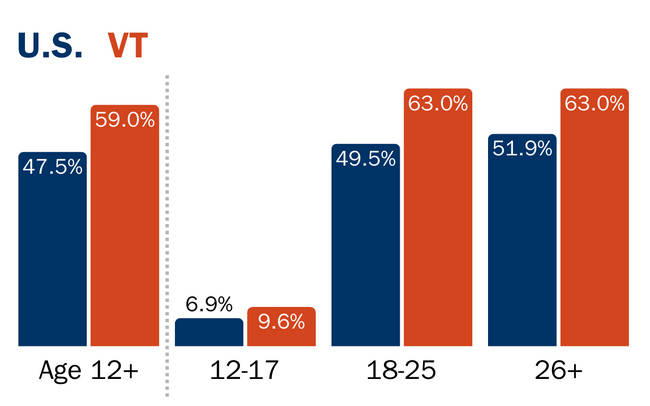Vermont's past month alcohol use rates are higher than the U.S. average for all age groups

Source: State Level Data National Survey on Drug Use and Health 2022-2023
Health risks of alcohol use
People who begin drinking before age 15 are four times more likely to develop alcohol dependence than those who begin drinking at 21.
| Short-Term Excess Use | Long-Term Excess Use |
|---|---|
|
|


